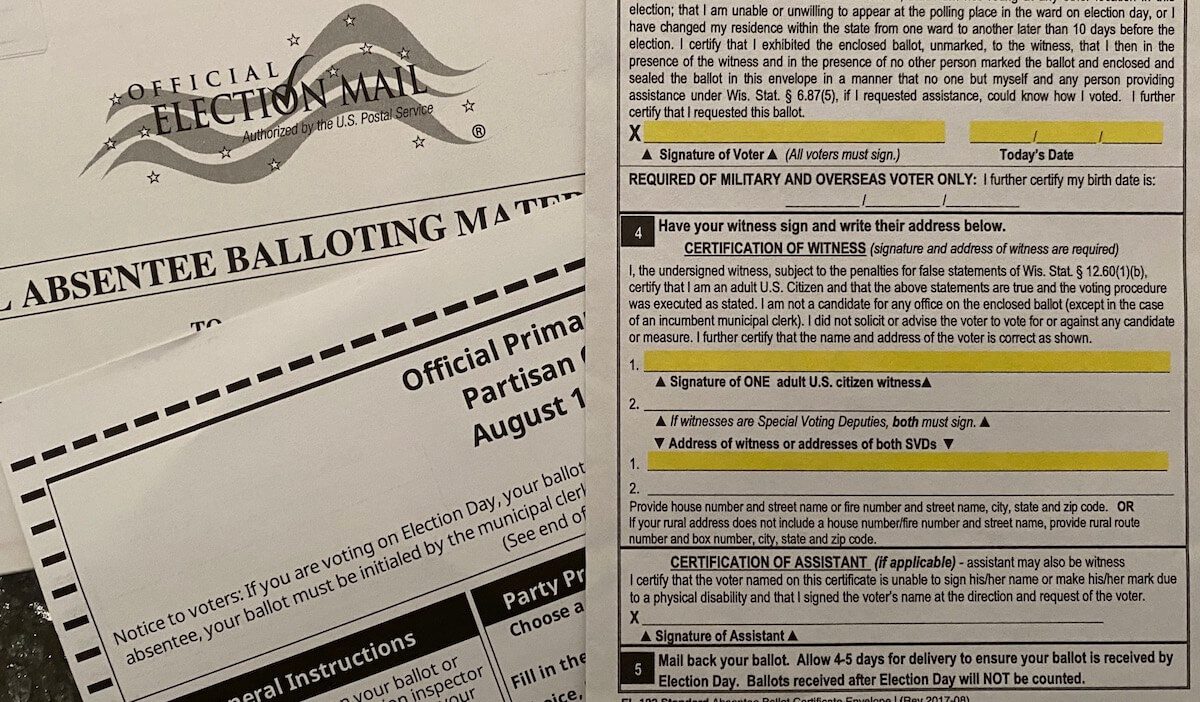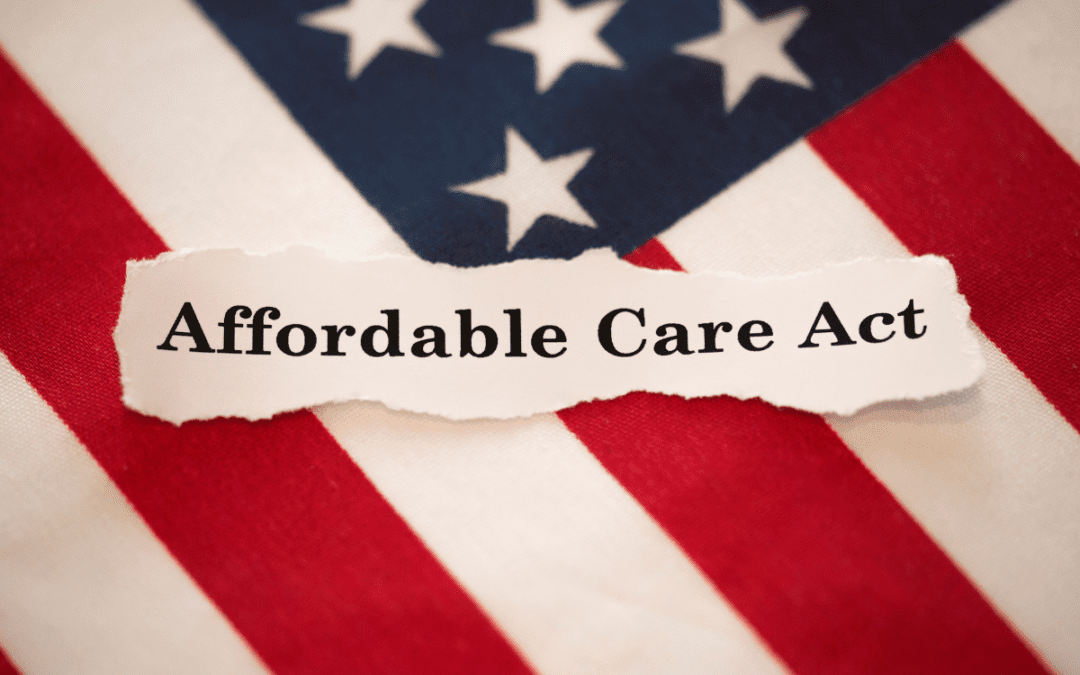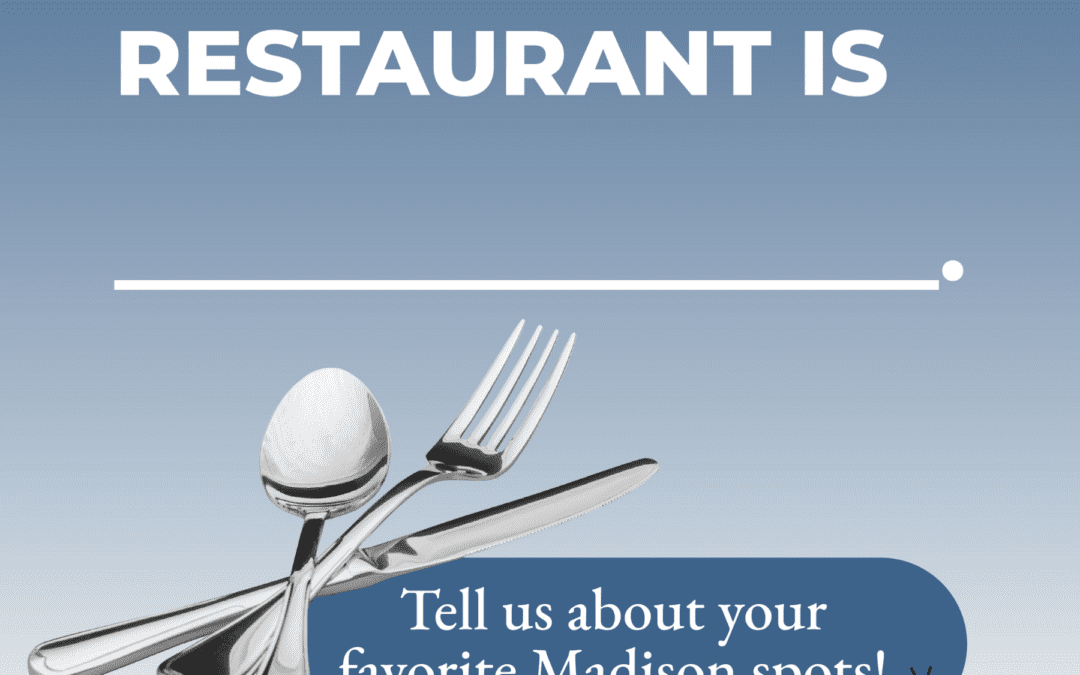Absentee voters use the same ballots as those who vote on Election Day, but mail-in voters will need an adult witness to fill out part of the envelope.
Mail-in voting, once promoted by both political parties until former President Donald Trump lied about its security, has become entangled in Republican efforts to limit its use—but it remains a safe and convenient way to vote, including here in Wisconsin, where ballots are already being cast for the Nov. 8 election.
Once limited to indefinitely-confined individuals, mail-in voting has expanded so that the right to vote can be exercised by those whose work, home, or physical conditions make in-person voting on Election Day a burden or an impossibility.
Since Trump’s “Big Lie” about the 2020 presidential election, 18 states have passed some form of limits on mail-in voting while 22 states have expanded its availability, according to the Brennan Center for Justice and Voting Rights Lab.
The first thing to know about voting by mail is to get going right away, since your local election clerk has to mail the ballot to you, and then you have to mail it back. Officials with the US Postal Service urge voters to get their requests in early and put the completed ballots back in the mail by Oct. 31, giving the post office seven days to deliver them to local elections clerks.
The process to request an absentee ballot is outlined by the Wisconsin Elections Commission on their voter website: MyVote.wi.gov. From that website, a voter can enter their name and address to first see if they are currently a registered voter. If not, the website also spells out the process for registering.
After following the website instructions, the state office notifies the voter’s local elections clerk, who sends a ballot to the voter along with a special return envelope.

Before filling out the ballot, each voter needs to have a witness. This person can be any adult citizen (spouse, friend, family member, neighbor). The only restriction is that the witness cannot be a candidate on that ballot.
The witness does not need to see how you voted and they have no say in how you vote. They are only there to witness the activity of you voting.
The voter then refolds the ballot, places it in the accompanying envelope and seals it.
The witness puts their signature and full address on the proper line of the absentee ballot envelope. Some witnesses forget to include the address or part of it. Don’t let that oversight put your ballot in jeopardy, as Republicans have been pushing elections officials and courts to reject ballots where the address has even a simple error such as a misspelled street or a missing zip code.
The rest of the absentee ballot envelope must be filled out by the voter: name, address, date of the election for that ballot (Nov. 8, 2022), and the municipality.
CAUTION: That municipality space on the envelope can trip up some folks whose residence—the address where they are registered to vote—is in one municipality (e.g., Town of Eagle Point) while their mailing address is in another municipality (for example, a PO box in Chippewa Falls).
Remember to sign the sealed envelope after making sure everything is filled in correctly.
Once you place it in the mail, nobody is allowed to see the actual ballot inside the envelope until a clerk or other election officer opens it on Election Day and puts the ballot into a counting machine.
Putting an absentee ballot in the mail isn’t a voter’s only option. The sealed envelope can also be brought back to the clerk’s office during its hours of operation, or it can be brought right to the polling place on election day before 8 p.m. and handed to a poll worker without the need to wait in line to cast a vote in a booth.
One noticeable difference from past years: no drop boxes. Republicans spreading Trump’s lies and conspiracies about drop boxes extended this summer to the four right-wing justices on the Wisconsin Supreme Court, who took away a secure option that had existed for many years.
Final point: If you have any questions, don’t be embarrassed to contact your local clerk. They are trained professionals and unabashedly pro-voting; they want to help you make sure your vote counts.To learn more: The Wisconsin Elections Commission recently introduced a series of four videos, called Elections 101, to explain the election process to voters. It can be found at elections.wi.gov/101.
Politics

Opinion: Many reasons why young adults should refuse to let Republicans kill the Affordable Care Act
In this op-ed, University of Wisconsin Medical School student, Samantha Crowley, shares the importance of young adults protecting the Affordable...

He said what? 10 things to know about RFK Jr.
The Kennedy family has long been considered “Democratic royalty.” But Robert F. Kennedy, Jr.—son of Robert F. Kennedy, who was assassinated while...
Local News

Stop and smell these native Wisconsin flowers this Earth Day
Spring has sprung — and here in Wisconsin, the signs are everywhere! From warmer weather and longer days to birds returning to your backyard trees....

Your guide to the 2024 Blue Ox Music Festival in Eau Claire
Eau Claire and art go hand in hand. The city is home to a multitude of sculptures, murals, and music events — including several annual showcases,...





